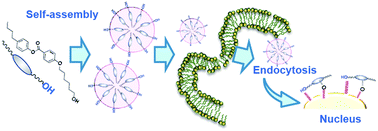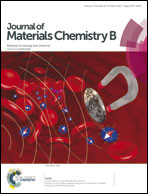Synthesis and anticancer properties of phenyl benzoate derivatives possessing a terminal hydroxyl group
Abstract
To assess the cytotoxic effects on A549 human lung cancer cells, we investigated a liquid-crystalline compound possessing a terminal hydroxyl group at concentrations of 0.1–20 μM. The compound, 4-butylphenyl 4-(6-hydroxyhexyloxy)benzoate (2), showed marked cell-growth inhibition at concentrations higher than 5 μM. Cell accumulation in the Sub-G1 phase indicating apoptosis was observed only at the highest concentration. Dynamic light scattering measurements show that the molecules form a spherical nanoparticle with a diameter of 130–170 nm at concentrations of 5–20 μM. We prepared the corresponding dimeric compounds and investigated their anticancer activity. The 1,2-benzene derivative, 1,2-bis[4-(6-hydroxyhexyloxy)benzoyloxy]benzene (4), exhibited cell-growth inhibition without affecting the cell cycle. However, the 1,3-benzene derivative, 1,3-bis[4-(6-hydroxyhexyloxy)benzoyloxy]benzene (5), was found to induce marked cell accumulation in the Sub-G1 phase. Furthermore, we assessed the cytotoxic effects of compounds 2, 4 and 5 on SW480 colon cancer cells and THP1 leukemic cells, as well as on WI-38 normal fibroblast cells. Both compounds 2 and 5 suppressed the growth of the solid cancer cells (A549 and SW480) more strongly compared with that of the hematological cancer cells (THP1). Unexpectedly, they also exhibited a strong cytotoxicity against the normal cells. We discuss the structure–property relationship in the anticancer activity of the mesogenic compounds.


 Please wait while we load your content...
Please wait while we load your content...